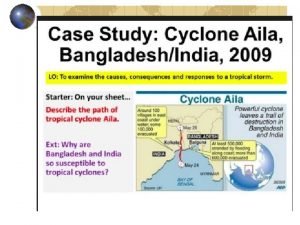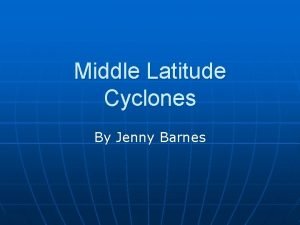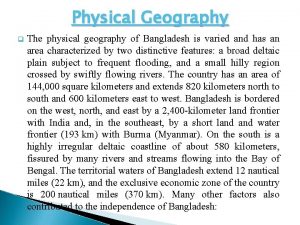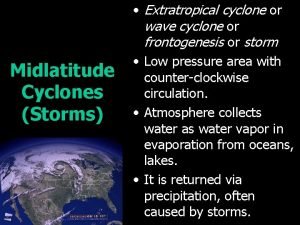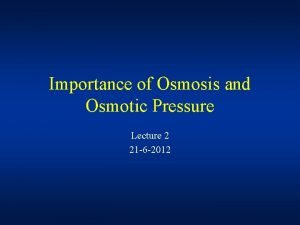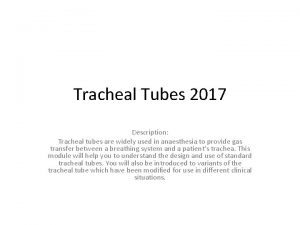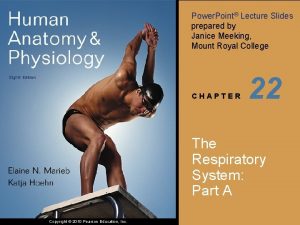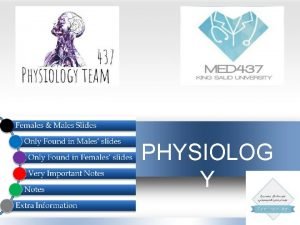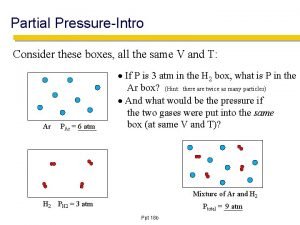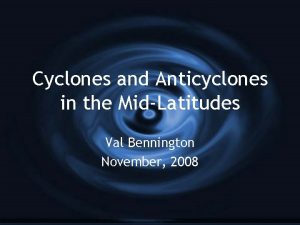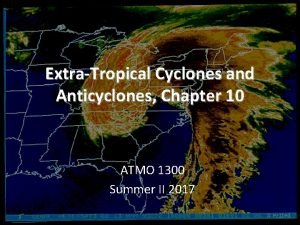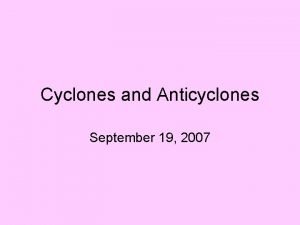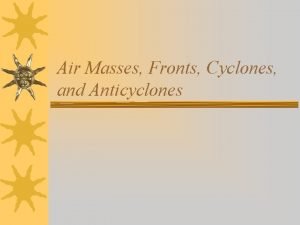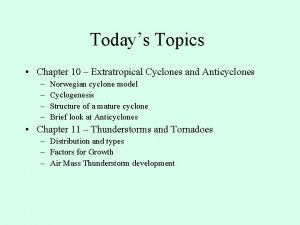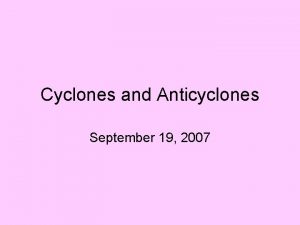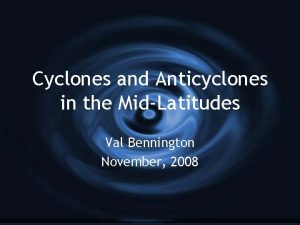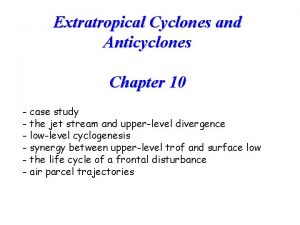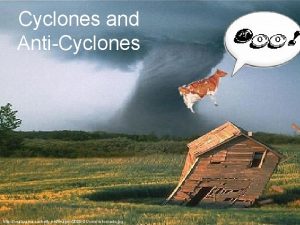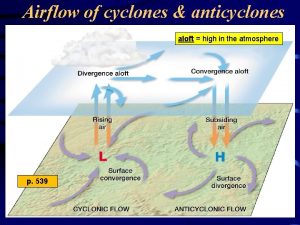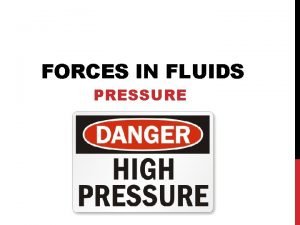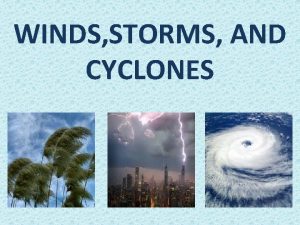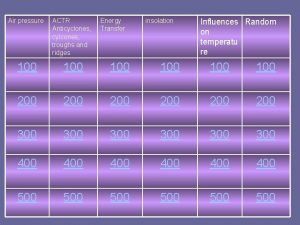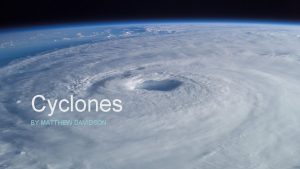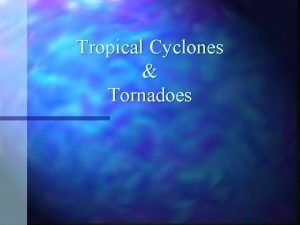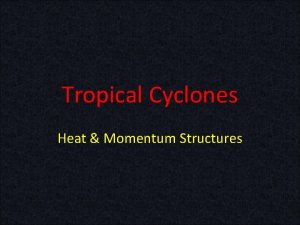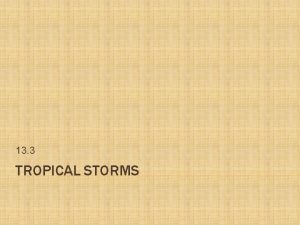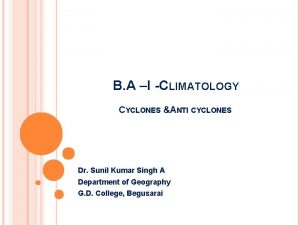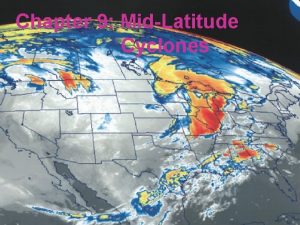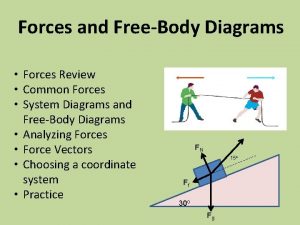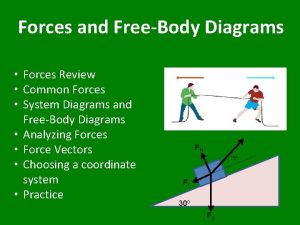CYCLONES AND ANTICYCLONES REVIEW OF KEY FORCES Pressure

























- Slides: 25

CYCLONES AND ANTICYCLONES

REVIEW OF KEY FORCES Pressure gradient force (PGF) • High to Low • Perpendicular to the isobars • Proportional to isobar spacing Coriolis force (COR) • Acts to right of parcel direction in N. Hemisphere (and to left in S. Hemisphere) • Maximum at poles, zero at equator • Proportional to wind speed

Geostrophic Wind (Vgs) Assumptions: 1) Straight isobars 2) No friction 3) Northern Hemisphere (unless told otherwise) PGF is constant COR increases with Increasing wind speed L pgf 00 00 pgf 04 04 pgf cor 08 pgf 12 Vgs cor cor H 08 12 Geostrophic wind (Vgs) is constant speed; parallel to the isobars

Geostrophic Wind PH = PGF; C = COR

Geostrophic Wind

Geostrophic Wind As PGF increases, geostrophic wind speed increases.

(or low heights) Westerlies Aloft (or high heights) (or low heights)

Gradient Wind (Vgr) Assumptions: 1) No friction 2) Wind parallel to curved isobars 3) Northern Hemisphere (unless told otherwise) Vgr L pgf Geostrophic wind would blow across curved isobars Vgs cor For the wind to follow curved isobars, the inward force must be stronger than the outward force. In this case, PGF>COR.

Gradient Wind (Vgr) Assumptions: 1) No friction 2) Wind parallel to curved isobars 3) Northern Hemisphere (unless told otherwise) H cor pgf Vgr For the wind to follow curved isobars, the inward force must be stronger than the outward force. In this case, PGF<COR.

Gradient Wind PGF = pressure gradient force CF = Coriolis force

Gradient Wind If PGF=COR, wind is not parallel to isobars If PGF>COR, gradient wind is parallel to isobars

Gradient Wind

Gradient Wind If PGF=COR, wind is not parallel to isobars If PGF<COR, gradient wind is parallel to isobars

Gradient Wind (Aside: “Net” = inward force minus outward force = centripetal acceleration)

Surface Wind (Vsfc) Surface wind (Vsfc) Geostrophic wind (Vgs) L L Vsfc pgf 00 00 00 Vgs fr 04 H 1. Friction is directed opposite the wind. 2. Friction reduces the wind speed. 3. Since Coriolis is proportional to wind speed, Coriolis is reduced. 4. Now the PGF>COR, so the surface wind will blow across the isobars toward low pressure. 00 fr 04 cor Vsfc pgf 04 cor 04 H The result is a wind that blows across the isobars. Friction is always directed opposite the wind, and Coriolis is always to its right (in the Northern Hemisphere).

Summary of Winds at Surface and Aloft (no friction) Geostrophic Gradient Surface (with friction) Gradient

Surface Gradient Vgr L pgf H Vsfc cor L pgf cor fr fr cor pgf Vgr H cor pgf Vsfc

Cyclones and Anticyclones Surface friction produces surface convergence and divergence.

Ekman Spiral L increasing friction pgf Vgs (no friction) cor H As friction increases (an air parcel gets closer to Earth’s surface), the wind becomes more cross-isobaric and the wind speed declines (as does the Coriolis force).

Buys-Ballots Law If wind is at your back, low pressure is to your “left. ”

Upper Air Chart

Southern Hemisphere Winds at Surface and Aloft Cor Trough PGF Ridge

S. Hemisphere Surface Map

Cyclones Northern Hemisphere Southern Hemisphere (Chap. 8, pp. 214– 224)

Quick Summary—Cyclones and Anticyclones (Chap. 8): • Geostrophic Wind (straight isobars, no friction) • balance between PGF and COR • wind is parallel to isobars • Gradient Wind (curved isobars, no friction) • inward force > outward force • wind is parallel to isobars around a curved path • cyclonic flow is counter-clockwise in N. Hemisphere and clockwise in S. Hemisphere • Surface Wind (friction is present) • friction reduces wind speed • slower wind reduces COR • flow is across the isobars toward low pressure • more friction increases cross-isobaric flow
 Global distribution of cyclones
Global distribution of cyclones What are middle latitude cyclones
What are middle latitude cyclones Physical geography of bangladesh
Physical geography of bangladesh Wave cyclone
Wave cyclone Air masses and fronts
Air masses and fronts Chapter review motion part a vocabulary review answer key
Chapter review motion part a vocabulary review answer key Like and unlike parallel forces
Like and unlike parallel forces Force and motion
Force and motion Unbalanced force
Unbalanced force Is erosion a constructive force
Is erosion a constructive force Example of ion dipole
Example of ion dipole Dynamic pressure formula
Dynamic pressure formula Hydrostatic vs osmotic pressure
Hydrostatic vs osmotic pressure Bevel of et tube
Bevel of et tube Tiefdruckgebiet
Tiefdruckgebiet The forces shown above are
The forces shown above are Intra vs intermolecular forces
Intra vs intermolecular forces δ+
δ+ Intramolecular forces vs intermolecular forces
Intramolecular forces vs intermolecular forces Electric forces and fields concept review
Electric forces and fields concept review Vmo advancement cpt
Vmo advancement cpt Pressure support vs pressure control
Pressure support vs pressure control Pressure mapping for pressure ulcers
Pressure mapping for pressure ulcers Intrapleural pressure
Intrapleural pressure Oncotic vs osmotic
Oncotic vs osmotic How to find partial pressure from total pressure
How to find partial pressure from total pressure
